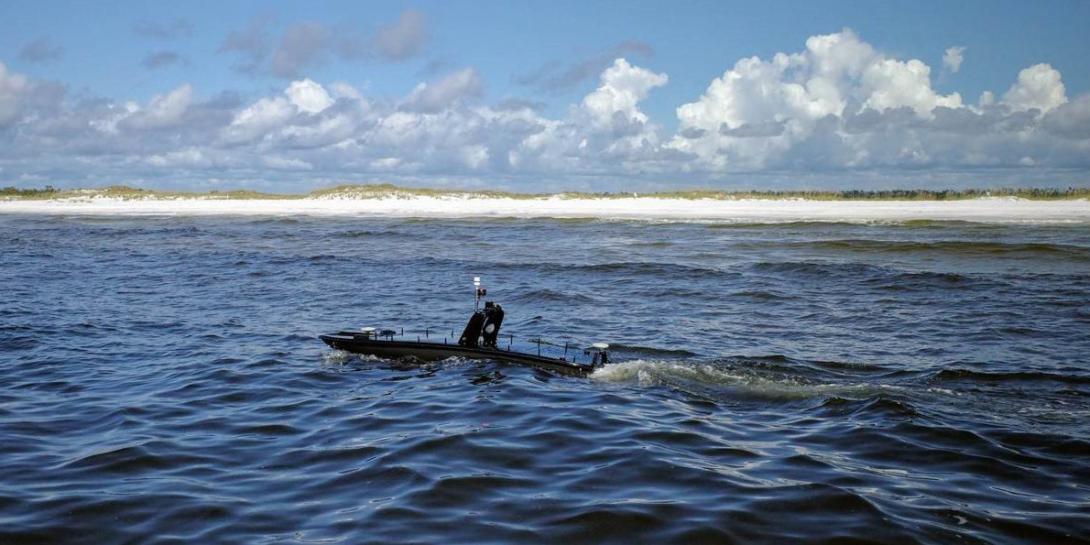Unmanned Fleet Swells
The Naval Sea Systems Command has made great progress in advancing the service's vision of developing a family of unmanned surface and undersea vehicles. To accomplish this task, it is nurturing an effort to add unmanned vessels, improving autonomous capabilities and supporting the open architectures required to share them across various platforms.
“You could argue that the Navy has been pursuing unmanned technology for decades,” says Capt. Peter Small, USN, program manager, unmanned maritime systems, Program Executive Office, Unmanned and Small Combatants, Naval Sea Systems Command (NAVSEA). In 2016, Adm. John Richardson, USN, then Chief of Naval Operations, charged the service with consolidating some of the smaller unmanned efforts to try to generate momentum and the critical mass to move further downfield on deploying a real capability from a Navy perspective.
The Rapid Autonomy Integration Laboratory (RAIL) is one of the pilot programs. The pilot takes an existing autonomy capability, which was developed by the Office of Naval Research, and integrates it into an existing medium UUV, the Razorback. As an ongoing effort through the rest of this fiscal year, the RAIL concept relies on a software factory to provide the digital engineering, infrastructure, tools and processes to develop, test, certify and deploy new advanced autonomous capabilities rapidly, Capt. Small explains.
The program is designed to develop autonomous capabilities as a set of microservices that use automated software, tools, services and standards that enable other projects to develop and deploy autonomous applications quickly and securely. “We're piloting each step of the RAIL process by which we bring in a new service, test it, do some software integration, test it again and then start testing it on the vehicle with hardware. We are somewhere in the middle of that process where we're testing and integrating those software codes,” the captain reports.
By breaking down autonomy into different software functions then examining each, the Navy can improve and advance the separate autonomous capabilities, from the basic UUV or unmanned surface vehicles (USVs) operations to more complicated autonomous sensor operations.
Explaining the autonomy needed for basic operations, Capt. Small says, “That is one set of the software code, and then there is a sensor package that's associated with that vehicle. Each of those sensors has a bit of software that provides information, and then there may be payloads and command and control that tie in as well.”
In addition, the service’s Unmanned Maritime Autonomy Architecture, which the command has developed over the past several years, allows integration of new sensors or capabilities brought into the RAIL as a third-party capability, if they meet the architecture’s standard.
Between 2016 and 2020, the Navy’s budget has doubled multiple times, three times even, year to year, which has helped the coordination of UUV and USV programs move forward. Even during the past fiscal year, despite the impact of the coronavirus pandemic, the service reached its largest annual budget number, executing more than $900 million in contracts across three warfighting domains, the captain relates.
In fiscal year 2020, the command awarded three competitive contracts for the development of USVs and issued two requests for proposals to construct additional UUVs. In addition, NAVSEA is fabricating 15 UUVs and seven USVs.
But the sea service is doing more than building new capabilities, it is ensuring they are seaworthy. “Over the past year, we have also conducted in-water testing of USVs and UUVs on three coasts, sometimes at the same time, and despite the necessary mitigations to keep people safe from COVID-19,” Capt. Small observes.
For the remainder of fiscal year 2021, NAVSEA plans to act on the new contracts and make additional contract selections for the construction of new autonomous sea vehicles. “There's a lot of work to be done there, but we're also increasing our focus on pilot programs for some of the advanced autonomous capability enablers in the areas of autonomy, data, and command and control,” he says.
To learn more about RAIL and the Navy’s other unmanned systems programs, look for Senior Editor Kimberly Underwood’s article in the February issue of SIGNAL Magazine.





Comments